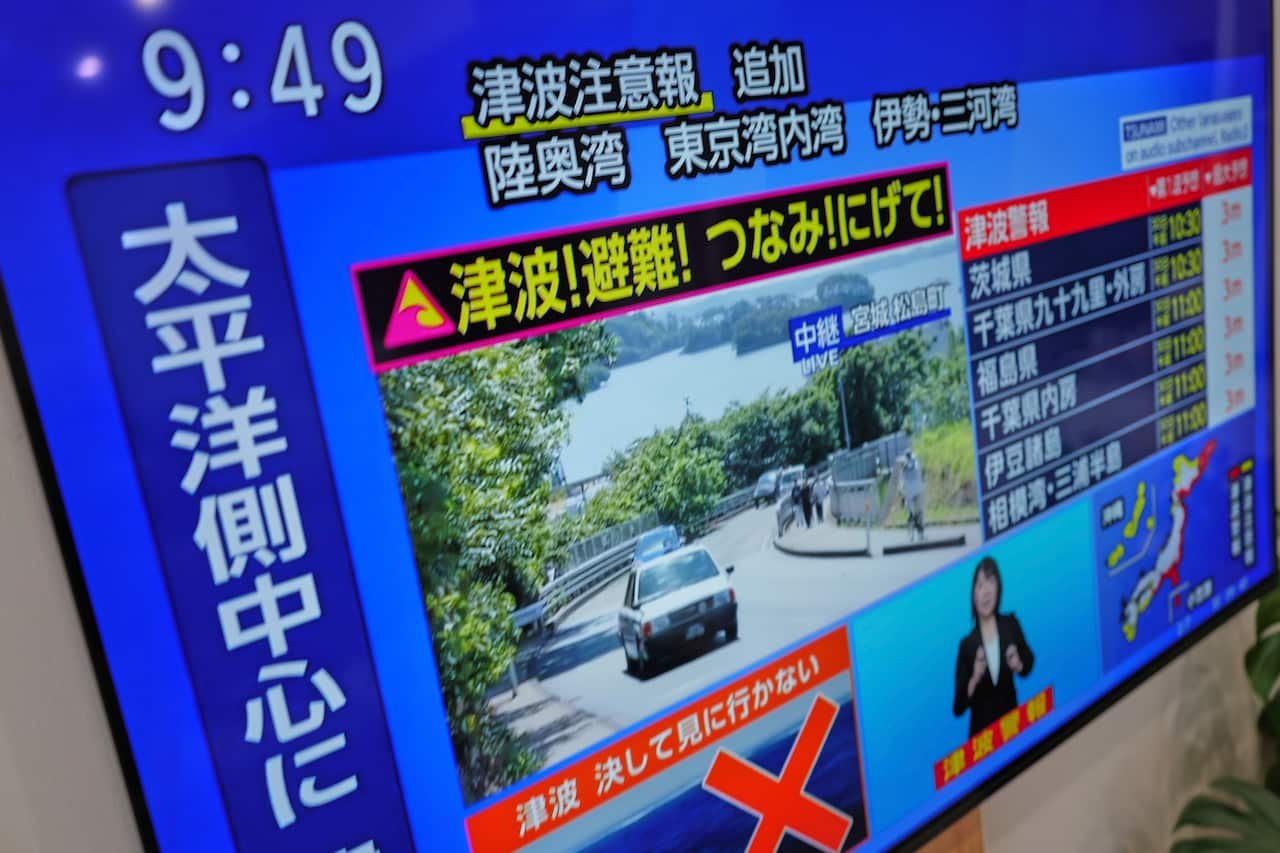A very powerful magnitude 8.8 earthquake off Russia’s far eastern Kamchatka coast on Wednesday triggered tsunami warnings as far away as French Polynesia and Chile, and was followed by an eruption of the most active volcano on the peninsula.
The shallow quake damaged buildings and injured several people in the remote Russian region while people on much of Japan’s eastern seaboard — devastated by a 9.0 magnitude earthquake and tsunami in 2011 — was ordered to leave, as were residents in parts of Hawaii.
Authorities in Japan, Hawaii and Russia later downgraded their tsunami warnings.
In French Polynesia. authorities urged residents to remain cautious but lifted a tsunami alert in the Marquesas Islands, saying people could return to their homes.
Tsunami waves had begun hitting early on Wednesday but were smaller than initially feared, authorities said.
The French High Commission in French Polynesia said wave heights had reached 1.5m, down from a previous forecast of up to four metres.
The Marquesas Islands, among the most remote in the world, have a population of approximately 9500, according to a 2022 census.
Elsewhere in French Polynesia, wave heights were expected to remain below 30cm, not requiring people to flee or shelter.
Most powerful quake since 1952
Russian scientists said the quake in Kamchatka was the most powerful to hit the region since 1952.
The US Geological Survey said it was shallow, at a depth of 19.3km, and centred 119km east-southeast of Petropavlovsk-Kamchatsky, a city of 165,000.
“It felt like the walls could collapse any moment. The shaking lasted continuously for at least three minutes,” said Yaroslav, 25, in the city.
Kremlin spokesman Dmitry Peskov said there had been no casualties in Russia, crediting solid building construction and the smooth operation of alert systems.
In Severo-Kurilsk in the northern Kuril Islands, tsunami waves exceeded three metres, with the largest up to five metres, Russia’s RIA news agency reported.
A quake of magnitude 6.07 later struck the Kuril Islands that lie between Kamchatka and northern Japan, the German Research Centre for Geosciences said.
Tsunami waves partially flooded the port and a fish processing plant in the town, sweeping vessels from moorings, regional officials and Russia’s emergency ministry said
Verified drone footage showed the town’s entire shoreline submerged, with taller buildings and some storage facilities surrounded by water.
A tsunami warning was displayed on a television in Yokohama, near Tokyo, on Wednesday. Source: AAP / AP/Eugene Hoshiko
Volcano eruption
The Klyuchevskoy volcano on Russia’s Kamchatka Peninsula began erupting later, a geological monitoring service said.
Located about 450km north of the regional capital, Petropavlovsk-Kamchatsky, Klyuchevskoy is one of the highest volcanoes in the world.
“A descent of burning hot lava is observed on the western slope. Powerful glow above the volcano, explosions,” the Russian Academy of Sciences’ United Geophysical Service said on Telegram.
Hawaii recorded waves of up to 1.7 metres while in Japan the largest recorded came to 1.3 metres, officials said.
Waves of nearly half a metre were observed in the US state of California, with smaller ones reaching Canada’s province of British Columbia.
But a tsunami advisory was cancelled for coastal British Columbia as well as coastal areas of south Alaska.
The quake occurred on what is known as a “megathrust fault” where the denser Pacific Plate is sliding underneath the lighter North American Plate, according to scientists.
The Pacific Plate has been on the move, making the Kamchatka Peninsula off Russia’s far east coast especially vulnerable, and bigger aftershocks could not be ruled out, they said.








